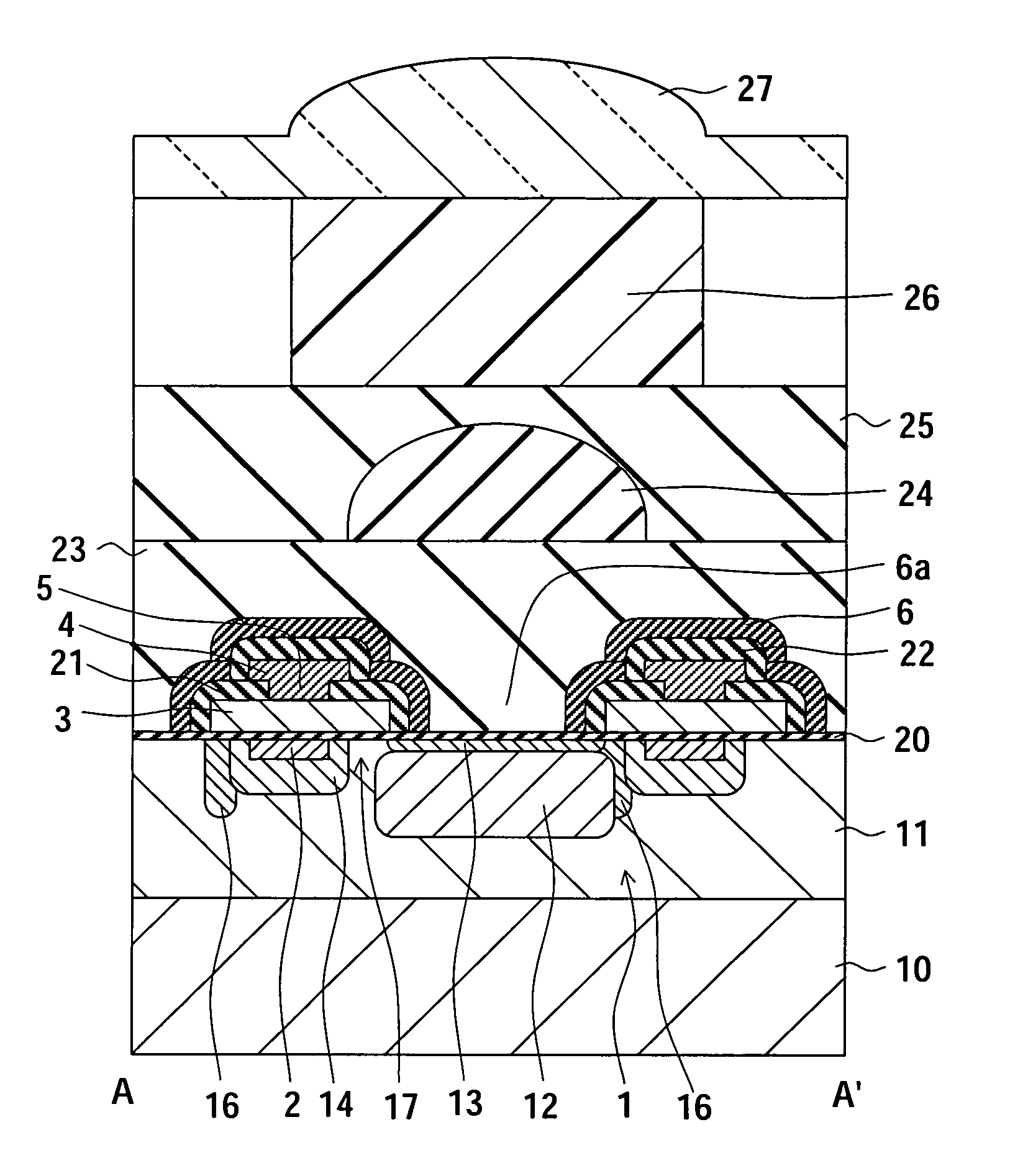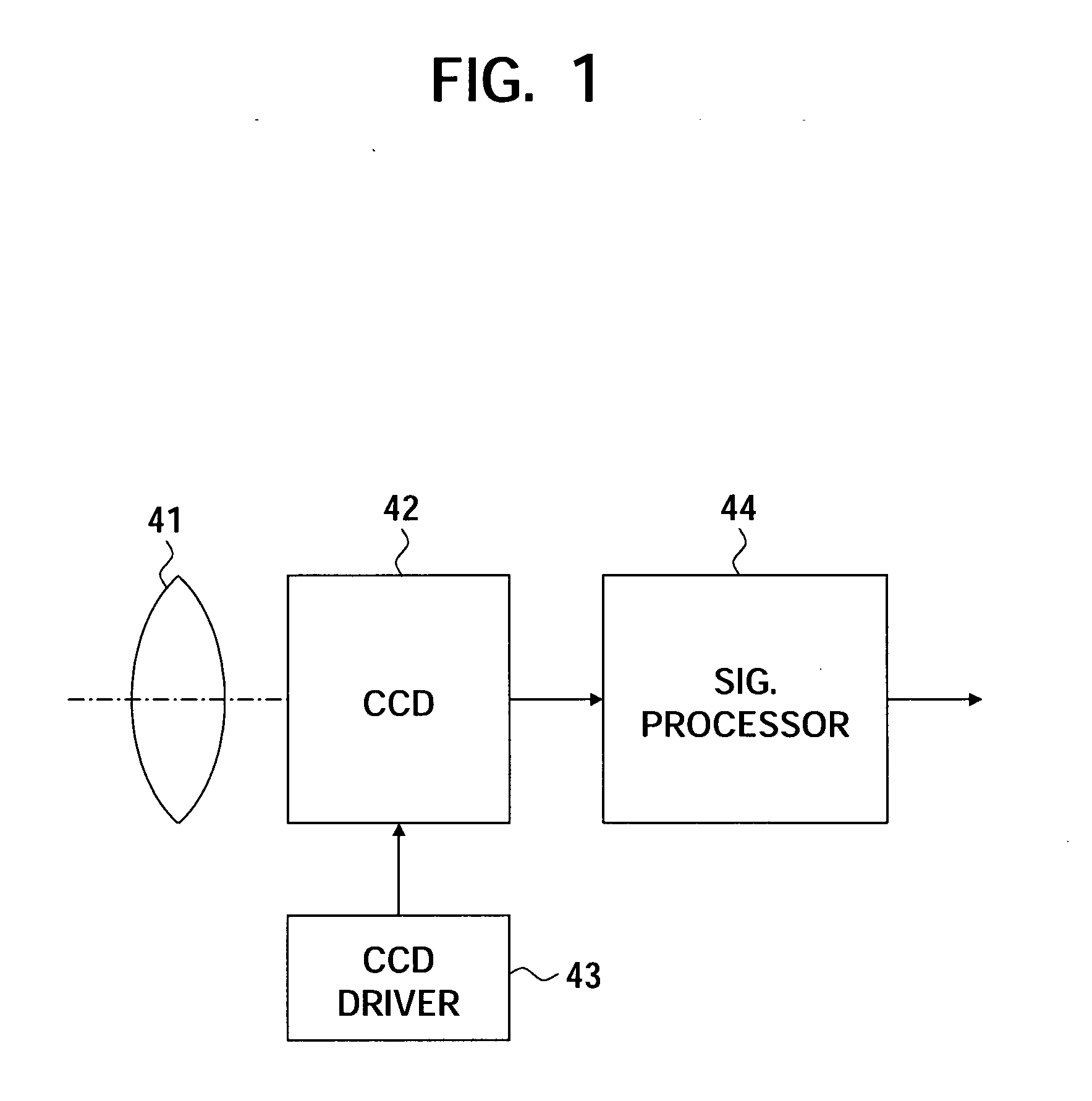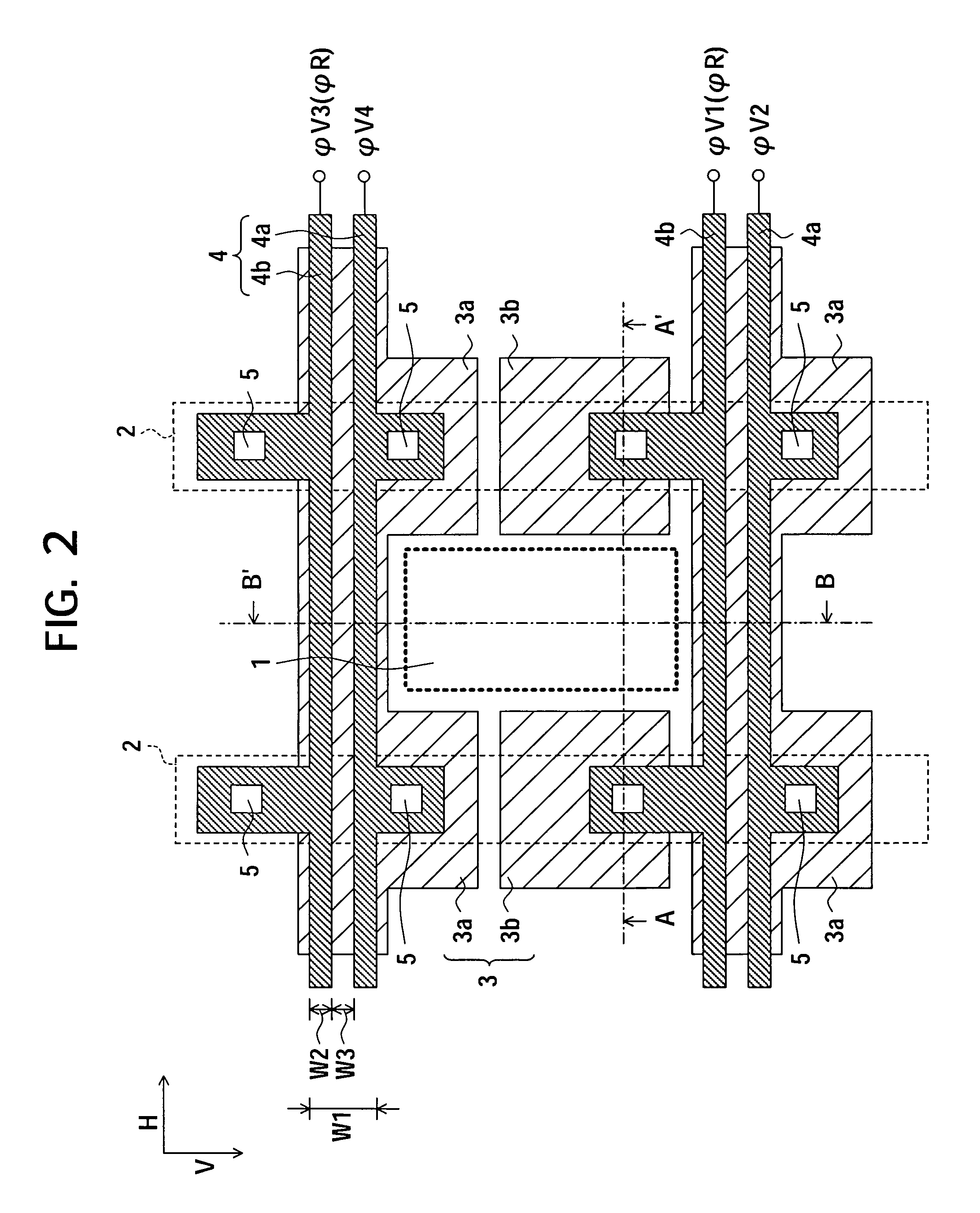Solid-state imaging device, production method and drive method thereof, and camera
a solid-state imaging and drive method technology, applied in the field of cameras, can solve the problems of delay of a transfer pulse applied, inability to detect the incident light, so as to reduce the blocking of an incident light, reduce the blocking of the incident light, and increase the angle of view
- Summary
- Abstract
- Description
- Claims
- Application Information
AI Technical Summary
Benefits of technology
Problems solved by technology
Method used
Image
Examples
first embodiment
[0037] First Embodiment
[0038]FIG. 1 is a schematic view of a camera of an embodiment of the present invention.
[0039] The camera shown in FIG. 1 includes an optical lens system 41, a charge-coupled device (CCD) 42, a CCD driver 43 and a signal processor 44.
[0040] The optical lens system 41 may include an objective lens, and an automatic-focusing and / or automatic exposure adjusting lens and mechanism. In the embodiment, the optical lens system 41 may include a shutter and a stop. The optical lens system 41 receives a light of an image and outputs the same to the CCD 42 to be focused thereat.
[0041] The CCD 42 and the CCD driver 43 cooperate to convert the incident light to the CCD 42 to an electric signal.
[0042] The signal processor 44 receives the converted electric signal indicating the image and carries out the image processing to recover the image, for example. Details of the CCD 42 and CCD driver 43 will be described.
[0043] As an example of the CCD 42 shown in FIG. 1, a four-...
second embodiment
[0086] [Second Embodiment]
[0087] An example of the four-phase driving CCD was explained in the first embodiment, while in the present embodiment, an example of a six-phase driving or three-phase driving CCD, wherein the CCD 42 and the CCD driver 43 cooperate for performing three-phase driving, will be explained. FIG. 8 is a plan view of a main part of a pixel portion in a solid-state imaging device according to the second embodiment. Note that the same reference numbers are given to the same components as those in FIG. 2 and explanations thereof will be omitted.
[0088] In the transfer channel 2 extending in the vertical direction V, the transfer electrodes 3 made by single-layer polysilicon are arranged. In the present embodiment, the transfer electrodes 3 includes third transfer electrodes 3c in addition to the first transfer electrodes 3a and the second transfer electrodes 3b. A film thickness of the transfer electrodes 3 is preferably thin as, for example, 200 nm or thinner to pr...
PUM
 Login to View More
Login to View More Abstract
Description
Claims
Application Information
 Login to View More
Login to View More - R&D
- Intellectual Property
- Life Sciences
- Materials
- Tech Scout
- Unparalleled Data Quality
- Higher Quality Content
- 60% Fewer Hallucinations
Browse by: Latest US Patents, China's latest patents, Technical Efficacy Thesaurus, Application Domain, Technology Topic, Popular Technical Reports.
© 2025 PatSnap. All rights reserved.Legal|Privacy policy|Modern Slavery Act Transparency Statement|Sitemap|About US| Contact US: help@patsnap.com



